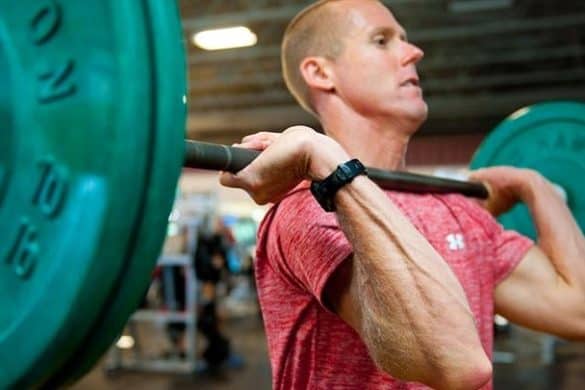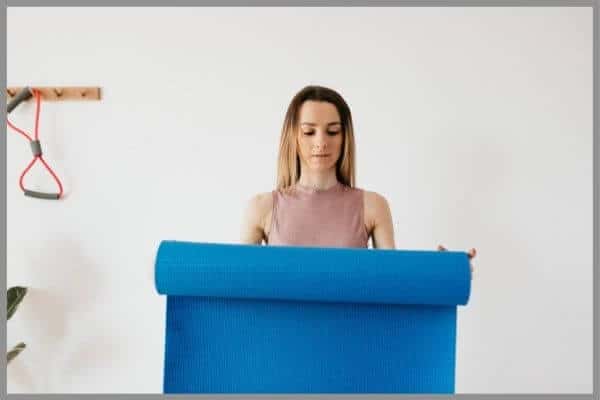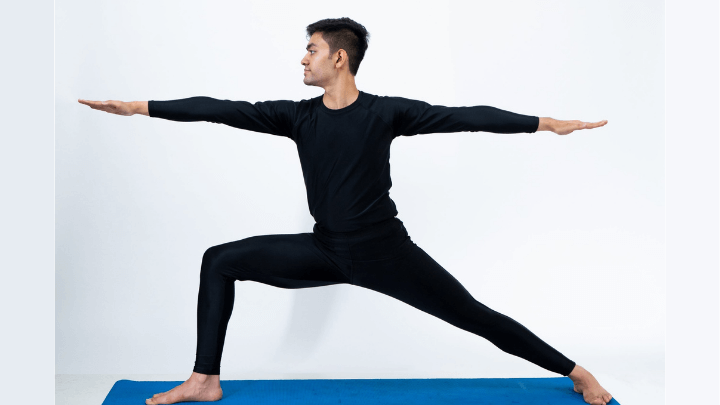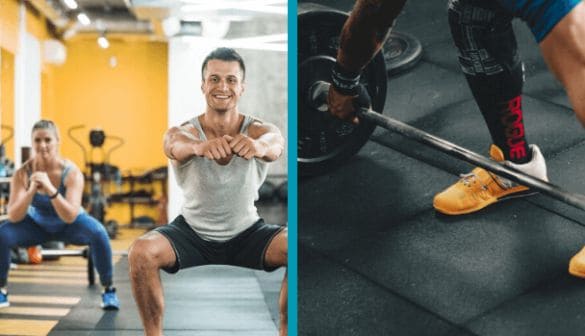Front squat vs back squat, which of the two is superior for lower body development?
We’ve all heard dozens of stories about how we should or should not do a proper barbell squat.
Some people swear by the effectiveness of front squats, while others, say that it will ruin your knees and you should only do back squats.
Well, one thing is for sure, the back squat is without a doubt the king of exercises and it is the most famous lower body movement.
Let’s be real, when you hear the word “Squat” you think of a back squat, don’t you?
Every lifter you can see in the gym has their own theory as to which squat is better.
However, this debate can’t be solved with guesses.
This is exactly why, the scientists from the University Of Florida, decided to conduct a study on this matter.
Before we give you the results from this study however, let’s get familiar with some lower body anatomy.
Anatomy Of The Legs

The lower body of us, humans, is made up of four primary muscle groups:
- The quadriceps
- Hamstrings
- Glutes
- Calves
Quadriceps
The quadriceps is the most massive muscle in the human body and it surrounds the femur (upper leg bone), entirely.
For the most part, this muscle group is located on the anterior (front) part of the upper leg, but also has fibers on the side.
The name “quadriceps” comes from “Quadri” meaning “four” and “Ceps” meaning “Heads”
That is to say, this is a four-headed muscle, that consists of the following:
- Rectus femoris, a muscle located in the middle
- The Vastus Intermedius, located next to rectus femoris
- Vastus Medialis (also known as the “teardrop”) located on the inner portion of the leg
- The Vastus Lateralis, located on the side of the leg
All these combined, make the quadriceps the most powerful muscle of the knee joint, which serves as an extensor, functionally.
Hamstrings
The hamstrings are the antagonist (opposite muscle group) of the quadriceps, located on the backside of the leg.
This muscle group is made out of 3 muscles
- Biceps femoris (yes, there is a biceps on the back of your leg)
- Semitendinosus
- Semimembranosus
As the name suggests, the “biceps femoris” is made up of two heads.
Its long head extends the hip and flexes the knee, while the short head only serves the latter function (flexion of the knee).
Muscles number #2 and #3 have identical functions to the biceps’ long head, as they extend the hips and flex the knee.
Glutes
The gluteal muscles, also known as “glutes” are a group of three muscles, that make up your butt.
Those are:
- The Gluteus Maximus
- Gluteus Medius
- Gluteus Minimus
Functionally, these muscles are responsible for extension, abduction, external and internal rotation of the hip joint.
Calves
The calves are located on the back part of the lower portion of your legs.
They consist of 3 muscles:
- Musculus gastrocnemius – This is a two-headed muscle, with one head on the inner portion of the leg and one on the outer
- Musculus soleus – This muscle is located right below the gastrocnemius and runs down to the Achilles tendon
The calves are responsible for flexion of the foot at the ankle joint and flexing the leg at the knee joint.
In squats, calves stabilise the movement.
Limited ankle mobility? Work on that lower portion of the leg!
Now that you understand some basic anatomy, let’s go on to explain the two types of squats, discussed in this article.
Back Squat

Though squats can be done with bodyweight, a dumbbell, a kettlebell and even on machines, the back squat remains the king of all lower body exercises.
If you want well-defined legs that are also strong, the back squat is without a doubt one of the exercises you must include in your strength training regimen.
This is the single most common leg exercise you will see people do in the gym during their weightlifting sessions.
Not only is this exercise a good way to target the quadriceps, glutes and make the calves and lower back work to stabilise the movement, but it is also a perfect option for a full-body exercise.
Including this exercise in your training regimen will make you stronger, bigger and more athletic.
There are two ways to do a squat, the high bar squat and the low bar squat.
Now, the low bar squat is mainly used in powerlifting, so let’s have a look at the most common way to do a back squat: the high-bar squat.
High-Bar Squat
One of the squat variations is the high bar squat, where the barbell is placed on the upper back and more specifically, the trapezius muscle.
With the high-bar squat, the Olympic bar must be balanced in a way that will allow most of the tension to go through the middle and back portions of the feet.
By pushing through the heels, you will achieve better activation of the quads.
Contrary to popular belief, with this variation, the knees can cross the line of the toes, but the movement must be initiated by bringing your butt down, and not the knees forward.
Additionally, with this type of squat, you can optionally contract the glutes up top.
Note: If you want to specifically target the glutes we’d recommend doing the kettlebell goblet squat.
Let’s have a look at the proper execution of this movement.
Execution:
- Place a bar on the rack and load it
- Get under the barbell and place it in the middle of your trapezius, comfortably
- Step under with both feet and unrack the bar and make sure the bar placement is comfortable
- Take a step back and get into a squat position by placing your feet at shoulder width with toes slightly opened out (You can use a wider stance if you find it more comfortable)
- Bend knees slightly and keep your back straight
- Look forward and squat down, without letting the torso fall forward
- Once you are at the bottom position with your legs parallel to the ground, squat up explosively (Don’t go down too rapidly as that may lead to meniscus tears)
- Do not lock out the knees up top and optionally, contract the glutes before the next repetition
Note: The squat engages the whole body, so including this powerful movement along with the deadlift in your strength training routine is essential to upper body development. If you are a beginner, consider hiring a strength coach to help you with exercise execution.
Involved muscle groups
Dynamically, this exercise engages the quadriceps and gluteal muscles.
Synergistically, the hamstrings, adductors and soleus help the quadriceps.
The static/dynamic stabilisers’ of this exercise are the hamstrings, calves, spinal erectors and the muscles in the abdominal area.
Again, this is a CLASSIC when it comes to leg training.
Watch the amazing video of British powerlifter Eddie Hall who reps out 325 kg on the back-squat!
Let’s take a look at the back squats counterpart: The Front Squat
Front Squat

The front squat is a compound exercise that strongly emphasises the quadriceps, which is why it is done by many bodybuilders and crossfit trainees.
Now, as opposed to the back squat, this exercise demands a much better technique that might turn out to be harder to learn, as the movement pattern is a tad bit more complex.
After all, balancing a heavy barbell on the front your shoulders is not an easy task, which is why we highly recommend learning the back squat first and getting used to full range of motion.
Though this exercise is not recommended for beginners, it is never bad to start learning the proper execution.
If you do so as a beginner, it would be good to first start off with an empty bar and only work your way up once you are 100% sure of your technique.
Let’s have a look at the proper execution of this movement.
Execution:
- Place the bar on the rack
- Lift your arms up until they are parallel to the ground
- Get under the barbell and get the bar position so that it is on the front of your shoulders
- Cross your hands and grab the bar
- Lift the elbows up to keep the bar on the shoulders
- Un-rack the bar
- Take a step back
- Place feet at shoulder width with toes opened out slightly
- Bend knees slightly and keep back straight
- Squat down slowly to a depth that is comfortable (preferably until legs are parallel to the ground)
- Go back up explosively and avoid locking out the knee joint up top
Involved muscle groups
Dynamically, the quadriceps are the dominant muscle that works during this exercise.
Synergistically, the gluteus, adductors and the soleus help the quadriceps with this movement.
The stabilising muscle groups during the front squat, are the hamstrings, calves, spinal erectors, abdominal muscles, front deltoids, trapezius muscles and the chest muscles.
Front squat vs Back Squat
Many gym bros will tell you that the front squat is the perfect way to “isolate” the quadriceps and get the tension off of the spine.
You may also get told that one of the two targets the glutes better and spares the tendons.
The Study
Well, so far, most studies on the front squat vs back squat ended up with insufficient data.
With the study discussed on here, however, it was a different case.
The researchers gathered 9 men and 6 women, all of which had at least a year of experience in the gym.
These test groups consisted of people who knew how to execute each exercise perfectly.
The researchers used Electromyography (EMG) sensors, attaching them to the lower body musculature.
This is by far the most precise way to measure muscle activity.
And as you know, increased stress upon the musculature leads to an array of anabolic (constructive) processes, that lead to hypertrophy (growth) during the post-workout recovery period.

On the image above, you can see the results from this study, boiled down to a single graph.
The white vertical represents the front squat and the black one represents the back squat.
On the X axis, you have letters which represent the muscles of the lower body, as follows:
- BF – Biceps Femoris
- RF – Rectus Femoris
- ST – Semitendinosus
- VL – Vastus Lateralis
- VM – Vastus Medialis
- ES – Erector Spinae
Based on this EMG research, the scientists concluded that when it comes to leg muscle recruitment, there are practically no differences in the front squat vs back squat.
Now, the researchers also measured the stress upon the joints during both movements and concluded that the front squat places about 15-20% less stress on the knee joints, as opposed to the classical, back squat.
Based on the information from this study, the researchers suggest that athletes with knee problems can make use of the front squat, that has less compression forces on the knee joints.
The same goes for people who have a lack of flexibility in the shoulder area and find back squats to be harder than front squats.
However, if you are completely healthy, there is no reason why you should not include BOTH types of squats in your leg workouts.
Conclusion
Alright, so what is the takeaway for the front squat vs back squat debate?
Well, it is clear – In terms of leg muscle recruitment, both exercises are head to head.
But evidence shows that the front squat places a tad bit less tension on the knees, which is why people with knee issues can make use of that!
We do advise experimenting with both exercises and ultimately, including them in your strength training routine to reap the maximum amount of benefits from both!
A final note here would be that including cardio on top of your resistance training exercises, such as the squats, will improve your overall conditioning and functioning.
Stay healthy, stay strong.







